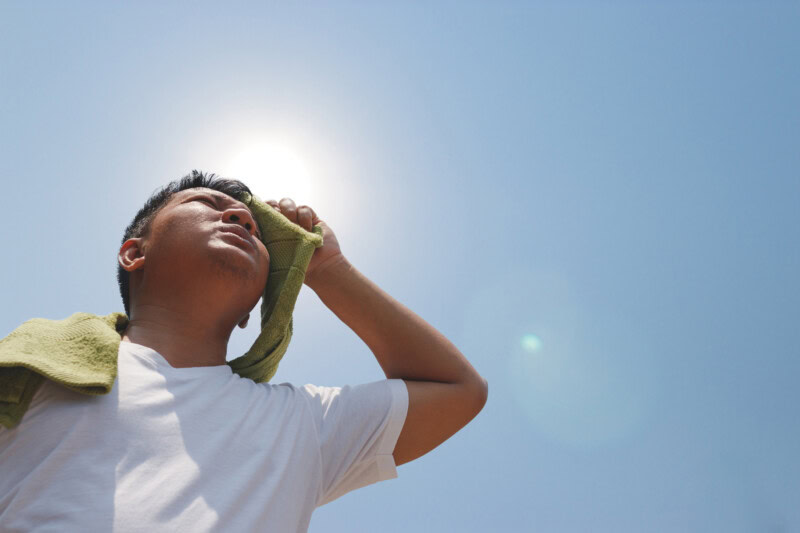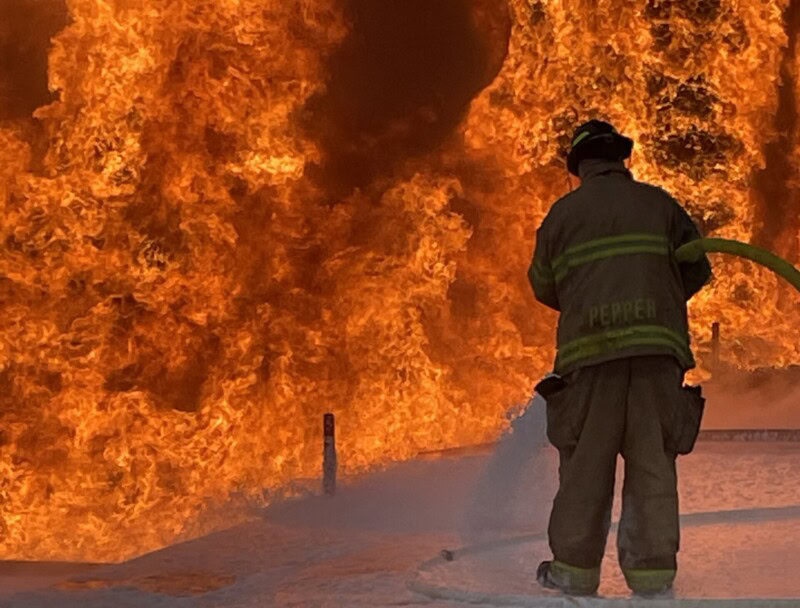For much of the country, the hottest months of the year are quickly approaching, and many of us will be spending time outdoors both for work and leisure. Higher temperatures also bring increased risk of heat-related illness like heat exhaustion, heat cramps, heat stroke, heat rash, and sunburn, all of which are preventable with some simple precautions.
Preventative Steps
CTEH health and safety experts recommend the following preventative steps when working or playing outside:
- If possible, do your best to avoid heavy exertion, extreme heat, sun exposure, and high humidity.
- Monitor your physical condition and that of your coworkers or friends for symptoms of heat illness.
- Wear light-colored, loose-fitting, breathable material, such as cotton or linen, and avoid non-breathable, synthetic fabrics.
- Wear sunscreen and reapply as necessary, per the manufacturer’s recommendation.
- Allow time to acclimate to high temperatures and gradually build up to heavy work.
- Schedule heavy work for the coolest parts of the day.
- Take frequent breaks in the shade or in a cool area.
- Avoid diuretics like energy drinks, caffeine or alcohol, which will increase risk of dehydration. Drink water frequently: enough that you never become thirsty.
- Be aware that protective clothing, personal protective equipment (PPE), or face coverings can increase risk of heat-related illness.
Recognizing Heat-Related Illness
Multiple illnesses can occur through exposure to high temperatures. According to the CDC, these range in severity from heat rash (mild) to heat stroke (potentially deadly). Here are the CDC’s details on five common types of heat-related illness.
Heat rash is a skin irritation caused by excessive sweating, and appears like a red cluster of pimples or small blisters. The rash can be treated by being kept dry and working in a cooler, less humid environment.
Heat cramps are painful muscle cramps in the abdomen, arms, or legs which occur after intensive sweating depletes the body’s salt and moisture levels. The cramps can be treated by drinking water, eating a snack, and/or drinking a carbohydrate-electrolyte replacement liquid, such as a sports drink, every 15 to 20 minutes.
Heat syncope is a fainting episode or dizziness that usually occurs with prolonged standing or sudden rising from a sitting or lying position. Heat syncope can be treated by sitting or lying down in a cool place or slowly drinking water, clear juice, or a sports drink.
Heat exhaustion includes symptoms like headache, nausea, dizziness, weakness, irritability, thirst, heavy sweating, elevated body temperature, and decreased urine output. It is brought on by excessive loss of water and salt, usually through sweating. A person with heat exhaustion should be taken to a clinic or emergency room for medical treatment. While awaiting help, the person should be moved to a cool area, given liquids to drink, and have unnecessary clothing removed. Cold compresses and frequent sips of cool water can also help.
Heat stroke is a serious medical condition which occurs when the body cannot control its own temperature. Symptoms include confusion, altered mental status, slurred speech, loss of consciousness, dry skin, profuse sweating, seizures, and high body temperature. This condition can be fatal if treatment is delayed. A person with heat stroke should receive emergency medical care as soon as possible, and should be moved to a cool, shaded area until medical services arrive. They should be cooled with cold water, water-soaked cloth, and circulated air.
You can learn more about CTEH’s safety services here, and learn more information about heat-related illness with the OSHA NIOSH Heat Safety Tool application.




